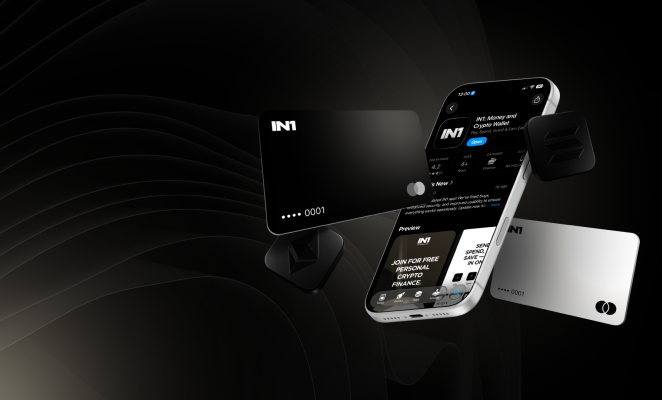

INTERTOP is a retailer of fashionable shoes, clothes, accessories, and cosmetics for the whole family. The retail network consists of 140 stores in Ukraine and Kazakhstan.
Attract users to the app who will not only install it, but also make regular purchases.
INTERTOP Ukraine is an omnichannel fashion company with its own marketplace. The retailer is actively implementing some of the most sophisticated IT solutions in Ukrainian eCommerce. In particular, it's improving the click-and-collect model, achieving full integration between the site, mobile application, and store network.
Click & collect is a technology widespread in other countries and retail stores. The customer gets the opportunity to order a product of interest in an online store or network app, and pick it up at the nearest offline outlet.
INTERTOP Ukraine's online sales grew by 61% in 2019. During the first months of 2020, due to quarantine restrictions, the company switched completely to online. During this period the share of mobile traffic on intertop.ua already exceeds 70%. To meet the expectations of customers, the team decides to completely update the mobile application.
The attendance of intertop.ua is 75% in the share of mobile users, so the growth and development of the application is a strategic direction. We need to give people the method of communication, which will be most convenient for them. Quarantine, digitalization, and the transition to the online played only to our advantage. But, in principle, it was a planned event, and the approximate release date of the new app was already known at the beginning of 2020.
The app is another way for users to communicate with us. Communication with us is faster, more convenient, and easier for them. That is, if users let us into their personal space, installed the app, and maybe even let us send them notifications, we think they are loyal to us, predisposed.
— Vladislav Semyontsov, Head of Digital Marketing in intertop.ua
The retailer is releasing their new mobile app in May 2020. A large-scale summer sale is planned for August. Due to changing quarantine conditions by region and in the country as a whole, no one is giving an exact date for the reopening of offline outlets. Under such conditions, the brand aims to motivate as many users as possible to install the updated app and increase sales from this channel.
Apps are the future. They are faster, more convenient, and easier to use if you compare them with the adaptive or mobile version of the site. The apps have free push notifications and that's the retention of the user at no extra cost ー isn't that what every marketer dreams of? The practice of world retailers shows that today applications convert better than the site. Plus, they help to maximize profits per customer with minimal investment.
— Vladislav Semyontsov, Head of Digital Marketing в intertop.ua
Here for us the key factor is time, so we moved away from the standard approach, that is, we conduct a set of works on ASO in parallel with the launch of advertising campaigns.
ASO (App Store Optimization) – is a set of combinations and methods aimed at increasing the flow of organic traffic to the app and increasing conversions from browsing to installation. ASO optimization in stores allows you to significantly increase the recognition and rating of the application, and most importantly, ー to simplify its search for the user.
We analyze competitors: which categories their apps are located in, what texts they use in titles and descriptions, what search queries they focus on. Aggregate the data and perform basic ASO optimization, correct some errors:
ASO should always be performed at the product launch stage, since any interaction with promotional sources, be it the purchase of paid advertising sources or PR materials ー the user will be directed to the application page in the store.
[[SLIDER-START]]


[[SLIDER-END]]
The preliminary results of ASO-optimization are encouraging. In relative terms, the increase in the number of installations was:
*In relation to the same period before iteration.
We are in the TOP-1 and TOP-3 for important product queries, as well as in the TOP-10 for high-frequency keywords: «Shoes», «Sale of clothes», «Shoes store». For the queries «Apparel» and «Clothing» the application is in the TOP-20, and before the iteration, these were below the TOP-50.
[[SLIDER-START]]


[[SLIDER-END]]
It's worth specifying that the growth in organic traffic in November was influenced by the upcoming Black Friday: the brand increased its media activity and launched new performance campaigns. But discount offers for Black Friday began to appear only a week before the sale itself, and we noticed an increase in installs at the beginning of November.
Previously, the INTERTOP app was practically not promoted in any way. To calculate the effectiveness, we used data on similar eCommerce projects, as well as benchmarks. To start buying traffic, we connected AppsFlyer and Firebase analytical trackers to the app.
On average, the process of setting up analytics for a mobile app takes a month to a month and a half, but sometimes the task can take longer. It all depends on the skills and load level of the development department. Make sure you have enough time.
We also recommend connecting multiple analytics systems at once, it allows you to form different data slices and monitor the picture as a whole.
In mid-August, we launched advertising campaigns on the most relevant and traffic-generating platforms: Google (Universal App Campaigns), Facebook Ads and Apple Search Ads Advanced. We have time to cover the end of the summer sale.
To «probe» the traffic and assess how it converts to installations and purchases, in the first stage we launch campaigns aimed at installing the app. We start with small budgets ー 30% of the amount planned in the media plan for two weeks.
We use only one concept as creatives ー the announcement of the current sale. As a GEO we selected all of Ukraine, excluding the occupied territories of Donetsk and Lugansk regions, as well as the Crimea.
In our experience, fragmentation of campaigns in Kiev, large regional centers, and other regions does not always show high efficiency, and sometimes even leads to a higher price for the installation.

A profitable offer motivates more users to install the app and place an order, and as a result, campaigns learn faster and start returning installs 2.7 times cheaper than we predicted.
At the beginning of September the sale ends and the installation price begins to rise. At the same time, the ratio of the actual price per installation to the planned 1 to 2. We decided to expand the budget to the planned level.
In addition, we launch campaigns in Google with optimization for the event in the app ー adding to the cart. Since there weren't enough orders by ad attribution yet, we use the pre-targeted action of adding to the cart as the main one.
We are changing creatives with a sale for a number of category banners.

At first this type of campaign did not show great results. But after increasing budgets and rates, these ramped up, began to fully utilize daytime budgets, and proved to be effective.
In parallel with Google, we launch CPA campaigns on Facebook, which almost immediately yield cheaper conversions.
Google UAC campaigns have a learning period of up to two weeks, while Facebook campaigns are trained when they reach 50 target actions per group. We managed to get the required number of conversions in three days.
During this period, we had refused advertising campaigns in Google Ads UAC on the iOS platform.
This is due to the already introduced restrictions on search traffic tracking and the upcoming release of iOS 14. Part of the released budget is redirected partly to Facebook, partly to Google Ads Android campaigns.
In September, we maintained the volume of purchases and installations, we got a slight increase in revenue while maintaining costs at the same level.
This period is dedicated to optimizing creatives and preparing for Black Friday. We're completely reworking the creatives and doing a number of optimization works:

This leads to an increase in revenue of 54%. At the same time, the growth of costs only increased by 42% in total.
To maximize the number of installs and purchases from the app, before Black Friday we increased the budget of regular advertising campaigns. We re-launch the Google UAC campaign on the iOS platform. Our main goal for this period is to gather traffic and customers on all possible platforms.
The launch on iOS does not justify itself, the lion's share of traffic and purchases goes to other channels. But the result from the work done completely overrides the failure. With a budget growth of 44%, the campaigns generate 80% more revenue than in the previous month.
[[SLIDER-START]]


[[SLIDER-END]]
For 4 months of work, we get an increase in the number of organic installs:
We also exceeded the plan for revenues from the paid advertising channel by 12%.
“Over the past months, the application has shown a two-fold increase in sales compared to the same period last year. For example, the month before last (January 2021), we missed the KPI in terms of the number of app downloads, but this did not stop us from fulfilling the volume of orders and sales from the app. Also, over the past seven months the number of downloads from two stores exceeds the line of 100 thousand. Earlier it was several times less, 3-4 times less”.
— Vladislav Sementsov, Head of Digital Marketing в intertop.ua
Case studies
Check out how we help companies like yours overcome challenges and rise to the next level.

Cost Per Action
Work period

.png)
Instagram followers
Facebook followers
Work period
